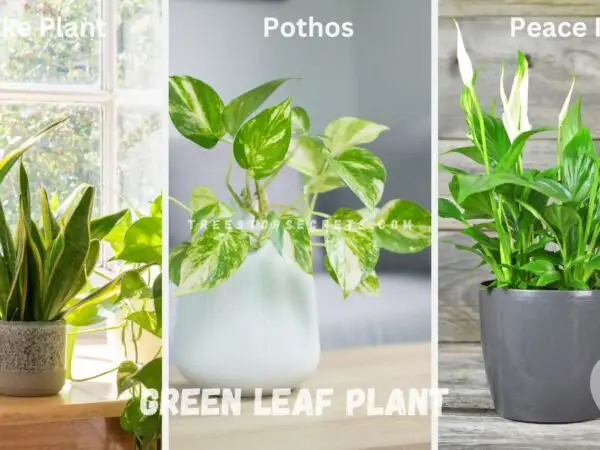Curious about the distinctive appearance of a sycamore tree leaf? Delving into nature's wonders, let's uncover the unique characteristics that define these leaves. With a history dating back centuries, sycamore trees have long been admired for their beauty and resilience. Exploring what sets their leaves apart can offer insights into the intricate world of botany and forestry. Join us as we unravel the mystery behind what makes a sycamore tree leaf stand out among its counterparts in the lush landscape. Embrace this journey through time and nature to grasp the essence of these remarkable foliage pieces.
Key Takeaways
- Sycamore trees have distinct leaves: Look for large, broad leaves with 3-5 lobes and a unique shape that resembles a hand.
- Identifying sycamore trees: Note the mottled bark, spherical seed balls, and the overall size of the tree when trying to distinguish sycamores from other tree species.
- Caring for sycamore trees: Ensure proper watering, pruning, and protection from diseases to maintain the health and longevity of sycamore trees in your area.
- Historical significance: Appreciate the rich history of sycamore trees in various cultures and their symbolic importance in different contexts.
- Threats to sycamore trees: Be aware of common threats like anthracnose, powdery mildew, sycamore lace bugs, and ecology that can affect the health of these trees.
- Support conservation efforts to preserve sycamore trees, their habitats, and ecology for future generations.
Sycamore Tree Overview
General Characteristics
Sycamore trees are known for their deciduous nature, shedding leaves annually. Belonging to the genus Platanus, these trees are recognized for their substantial size and distinctive mottled bark that peels off in patches. The unique appearance of sycamores makes them easy to identify among other tree species.
Native to North America, Europe, and Asia, sycamore trees can be found in diverse habitats such as forests, riverbanks, and urban areas. Different species of sycamores have specific regions where they naturally thrive. For instance, the American sycamore is commonly found along streams and rivers in eastern North America.
Growing Conditions
Sycamore trees prefer moist soil conditions to thrive healthily. They also enjoy full sun exposure but can tolerate some shade if necessary. These adaptable trees can withstand various climates ranging from hot summers to cold winters without significant issues or damage over time.
Sycamore Leaf Characteristics
Shape and Size
Sycamore tree leaves are known for their distinctive shape and size. These trees boast a broad, spreading canopy that provides ample shade during hot summer days. Standing tall at heights of up to 100 feet or more, sycamores dominate the landscape with their grandeur. The trunk of a mature sycamore tree is robust and sturdy, symbolizing strength and resilience in nature.
Sycamore leaves exhibit unique features throughout the year. During the growing season, these leaves don a vibrant shade of bright green, adding freshness to the surroundings. Young sycamore trees showcase smooth bark surfaces that gradually transform as they age into rough textures adorned with patches of white, gray, and brown hues.
Seasonal Changes
As autumn approaches, sycamore leaves undergo a remarkable transformation in color. Transitioning from green to vibrant shades of yellow, orange, and brown hues create a picturesque display before gracefully falling off the branches. In winter's embrace, the bare branches of sycamores etch intricate silhouettes against the sky's canvas—a sight that captivates onlookers with its stark beauty. Spring heralds new beginnings for sycamores as small buds emerge on their branches; unfurling gradually into fresh green leaves that breathe life back into these majestic trees.
Identifying Sycamore Trees
By Leaves
Sycamore tree leaves are distinctive in shape, resembling the fingers of a hand. Each leaf typically has three to five lobes with pointed tips, creating a broad and rounded appearance. The palmate shape makes them easy to distinguish from other tree leaves. The texture of sycamore leaves is smooth and slightly waxy, giving them a glossy look on the upper surface while appearing lighter and less shiny underneath. Veins on the leaf form an intricate network that adds to their unique appearance.
- Shape: Palmate with three to five lobes
- Texture: Smooth and slightly waxy
- Appearance: Broad, rounded, glossy upper surface
By Flowers
Sycamore trees produce small blooms that are not very noticeable. These flowers grow in spherical clusters known as heads before developing into round fruits called "sycamore balls." While the flowers may not be eye-catching, they play a crucial role in the reproduction cycle of these trees by eventually transforming into distinct fruit structures.
- Flower arrangement: Small and inconspicuous in spherical clusters
- Fruit development: Round spiky fruits named "sycamore balls
By Fruits
Sycamores bear unique fruits referred to as "sycamore balls" or "buttonballs." These round structures are covered in small spikes and contain numerous seeds inside. As they mature, these fruits break apart easily, releasing their seeds for dispersal through wind action. This method allows sycamores to spread their seeds over wide areas efficiently.
- Appearance: Round with spikes
Sycamore vs Other Trees
Leaf Differences
Sycamore leaves come in various sizes and shapes depending on the species and individual trees. Some sycamore leaves have deeper lobes than others, with variations in the roundness or pointedness of these lobes. For instance, the American sycamore tree typically has large, broad leaves with shallow lobes, while the London plane tree's leaves are smaller with deeper indentations.
The differences in sycamore leaves' appearances can be attributed to their genetic makeup and environmental factors. Factors like sunlight exposure, soil quality, and water availability can influence the size and shape of sycamore leaves. These variations make it important to observe multiple characteristics when identifying a sycamore tree solely based on its leaf structure.
Bark Features
One distinctive feature of sycamores is their patchy bark appearance. As these trees age, their outer bark sheds irregularly to reveal lighter-colored inner bark underneath. Younger sycamores, however, exhibit smoother bark that is pale greenish-gray in color before transitioning into the characteristic patchy appearance as they mature.
Observing a tree's bark can provide valuable clues for identification purposes; thus, understanding this unique trait of sycamores aids in distinguishing them from other tree species that may have different types of barks. The distinct peeling pattern of a mature sycamore's bark sets it apart from many other common trees found within similar habitats.
Historical Significance
Sycamore tree leaves have a unique appearance, which is essential to identify these majestic trees. In Greek mythology, sycamores were revered as sacred to Artemis, the goddess of hunting and wilderness. Native American tribes also held sycamores in high regard, viewing them as symbols of strength and protection.
The folklore surrounding sycamore trees adds an intriguing layer to their significance. For instance, ancient Greeks believed that Artemis used sycamore leaves for protection during her hunts. Similarly, Native American tribes incorporated sycamore symbolism into their rituals and ceremonies.
Apart from their cultural importance, sycamores offer medicinal benefits through their leaves and bark. Sycamore leaves are known for their astringent properties when used in traditional medicine practices. The bark of these trees has been historically employed to treat various skin conditions and wounds due to its healing properties.
While exploring the medicinal uses of sycamores can be fascinating, it's crucial to exercise caution and seek professional guidance before utilizing any parts of the tree for medicinal purposes.
Caring for Sycamore Trees
Planting Tips
When planting a sycamore tree, ensure the location has well-drained soil and enough space for growth. Dig a wide hole, not too deep. Water the new tree regularly in its first year to establish strong roots.
- Choose a spot with good drainage
- Make sure there is ample room for growth
- Water the newly planted tree consistently
Deep watering once or twice weekly is better than frequent shallow watering during dry periods. Applying balanced fertilizer in early spring can help promote healthy growth.
- Regular watering benefits sycamore trees
- Deep watering is preferable over shallow sessions
- Fertilize in early spring for healthy growth
Pruning Techniques
Prune sycamore trees before new growth starts, preferably late winter or early spring. Removing dead or diseased branches helps maintain overall tree health by improving air circulation within the canopy.
- Prune before new growth emerges
- Remove dead or diseased branches
- Enhance air circulation by thinning out crowded branches
Threats to Sycamore Trees
Common Pests
Sycamore trees are often at risk of pest infestations, with common culprits being aphids, scales, and caterpillars. Regularly checking the leaves and branches for signs of these pests is crucial in catching any issues early. If an infestation is detected, using appropriate insecticides or biological controls can help manage the problem effectively.
Pests like aphids can cause damage by feeding on the sycamore tree's sap, leading to stunted growth and distorted leaves. Scales create a protective covering on branches, while caterpillars consume foliage. By promptly addressing these pests through inspection and treatment when necessary, the health of sycamore trees can be preserved.
Diseases
One prevalent fungal disease that affects sycamore trees is Sycamore anthracnose, which targets both leaves and twigs. Another common issue is powdery mildew, characterized by a white powdery substance coating the leaves. To combat these diseases effectively, maintaining proper sanitation practices around the tree and applying timely treatments are essential steps in preventing widespread infection.
When left untreated, anthracnose can lead to defoliation and twig dieback in sycamores. Powdery mildew weakens the tree by inhibiting photosynthesis due to its presence on leaf surfaces. Through vigilant observation of symptoms like leaf spots or white coatings coupled with immediate action through suitable treatments or pruning affected areas if needed helps ensure healthy sycamores.
Environmental Threats
Urban development poses a significant threat to sycamore trees as it encroaches upon their natural habitats. The changing climate conditions also impact these trees' ability to thrive by altering growing environments and making them more susceptible to pests and diseases like anthracnose or powdery mildew. Pollution from sources such as air pollution or soil contamination further exacerbates the challenges faced by sycamores by weakening their defenses against threats.
Sycamore Tree Conservation
Protection Efforts
Conservation organizations play a vital role in safeguarding sycamore trees. By conducting awareness campaigns, they educate the public about the importance of preserving these majestic trees. Planting native sycamores in urban areas not only enhances green spaces but also contributes to maintaining biodiversity by providing habitats for various wildlife species. Promoting sustainable practices like responsible logging helps ensure the longevity of sycamore forests by preventing overexploitation.
-
Pros:
-
Raises awareness about sycamore tree conservation
-
Enhances biodiversity and ecosystem benefits
-
Supports long-term protection through sustainable practices
-
Cons:
-
Requires significant resources and funding
-
Challenges in enforcing regulations on logging activities
Habitat Restoration
Restoring sycamore habitats is crucial for their survival. This process involves planting native trees to replenish degraded areas and create thriving ecosystems. Removing invasive species that compete with sycamores for resources is essential to allow these iconic trees to flourish. Improving water quality in rivers and streams where sycamores grow ensures that they have access to clean water, vital for their growth and health.
- Collaboration between conservation groups, landowners, and government agencies is key.
- Creating buffer zones along water bodies protects sycamores from erosion and pollution.
- Planting native trees aids in restoring degraded habitats for sycamores.
You've now learned all about sycamore trees, from their distinctive leaf characteristics to how to identify and care for them. Understanding the historical significance and threats they face sheds light on the importance of sycamore tree conservation efforts. By recognizing the unique features of sycamores and differentiating them from other trees, you can contribute to preserving these majestic beings for future generations.
Take action today by planting a sycamore tree in your backyard or joining local conservation initiatives. Your small steps can make a big difference in safeguarding these vital components of our ecosystem. Together, let's ensure that the beauty and benefits of sycamore trees continue to thrive in our environment.
Frequently Asked Questions
What are the main characteristics of a sycamore tree leaf?
Sycamore tree leaves are large, broad, and have 3-5 lobes with pointed tips. They resemble a handprint and can grow up to 10 inches wide. The upper side is dark green, while the underside is lighter in color.
How do you identify a sycamore tree among other trees?
Look for the distinct mottled bark that peels off in patches on older trees. Sycamores have unique seed balls hanging from branches year-round and their leaves turn brown in autumn. The size of the tree can also help distinguish it as they tend to be large.
Why are sycamore trees historically significant?
Sycamores hold cultural significance worldwide due to their mention in ancient texts like the Bible and connections to folklore. They symbolize strength, protection, longevity, and resilience across various civilizations throughout history.
How should one care for sycamore trees?
Ensure proper watering during dry spells and mulch around the base to retain moisture. Prune dead or damaged branches regularly but avoid heavy pruning that may stress the tree. Consulting an arborist for professional care advice is recommended.
What threats do sycamore trees face today?
Common threats include anthracnose fungal disease which causes leaf spots and twig dieback, as well as powdery mildew infections. Insect pests like lace bugs can also damage foliage. Climate change effects such as extreme weather patterns pose additional risks.
Image Source: Paid image from CANVA





